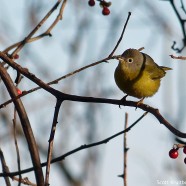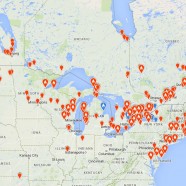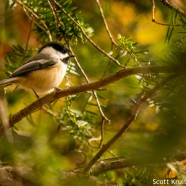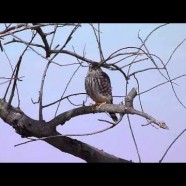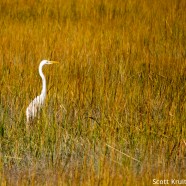Nashville Warbler (Oreothlypis ruficapilla)
Happy Thanksgiving! Many Thanksgivings ago I was watching my bird feeders at my parent’s house in Connecticut while waiting for family to arrive and dinner to begin on a cool, rainy day. While looking out the window I spotted, naked eye, an oddly shaped and surprisingly brightly colored bird on a tree branch. I grabbed my binoculars very quickly and had a good look at a warbler inspecting the feeding area and all of the bird commotion below it. It had a yellow body, dark green on the back and wings, a gray hood and very bright white eye rings. It was a Nashville Warbler! Their...
Read MoreSnowy Owl eBird Map 11/24/14
Here is the Snowy Owl eBird map for August through November as of Monday morning, November 24, 2014. Additional birds seem to have moved into already busy areas in the central flyway, Great Lakes region and the Atlantic Coast. A few edged down the eastern seaboard making their way onto Long Island, into Delaware and Maryland. The last week of November is usually a very good time to see them, even during years with little to no broad or significant irruption of the species. Good luck!
Read MoreBlack-capped Chickadee (Poecile atricapillus) irruption
There have been Black-capped Chickadees (Poecile atricapillus) moving south in very subtle ways for a couple of months now. If you watch migratory hotspots you can sometimes detect their irruption years, especially if that location is not a particularly friendly habitat for the species. I have seen flocks of 10-20 birds tightly packed together and feeding on the move, possibly heading for a feeding station like yours. I always wonder what particular triggers end up notifying a widespread and highly adaptive bird like this one that they should nonetheless change their quarters for the autumn...
Read MoreMerlin (Falco columbarius) HD video
This migrant Merlin (Falco columbarius) was found taking a short rest in this tree during a very windy day – all the more conducive to fly with! Whenever I get the chance to observe one individual like this for a prolonged period I inevitably wonder where it has been and where it is going. I wish I knew where this bird was now… Scott Kruitbosch Conservation & Outreach Coordinator
Read MoreOverwintering Great Egrets
Would you believe that I took this photo of a Great Egret (Ardea alba) in Connecticut only last week? It is exceptionally true and resident birders in New England can attest to the fact that we now have them as an overwintering species! Climate change is starting to allow us to keep more long-legged waders and shorebirds, such as the American Oystercatcher, year-round in parts of Long Island Sound and the New England Atlantic coastline. Why bother leaving when you can make it through the entire season? Migration is the most perilous part of the life of a bird and while a colder than usual or...
Read More



